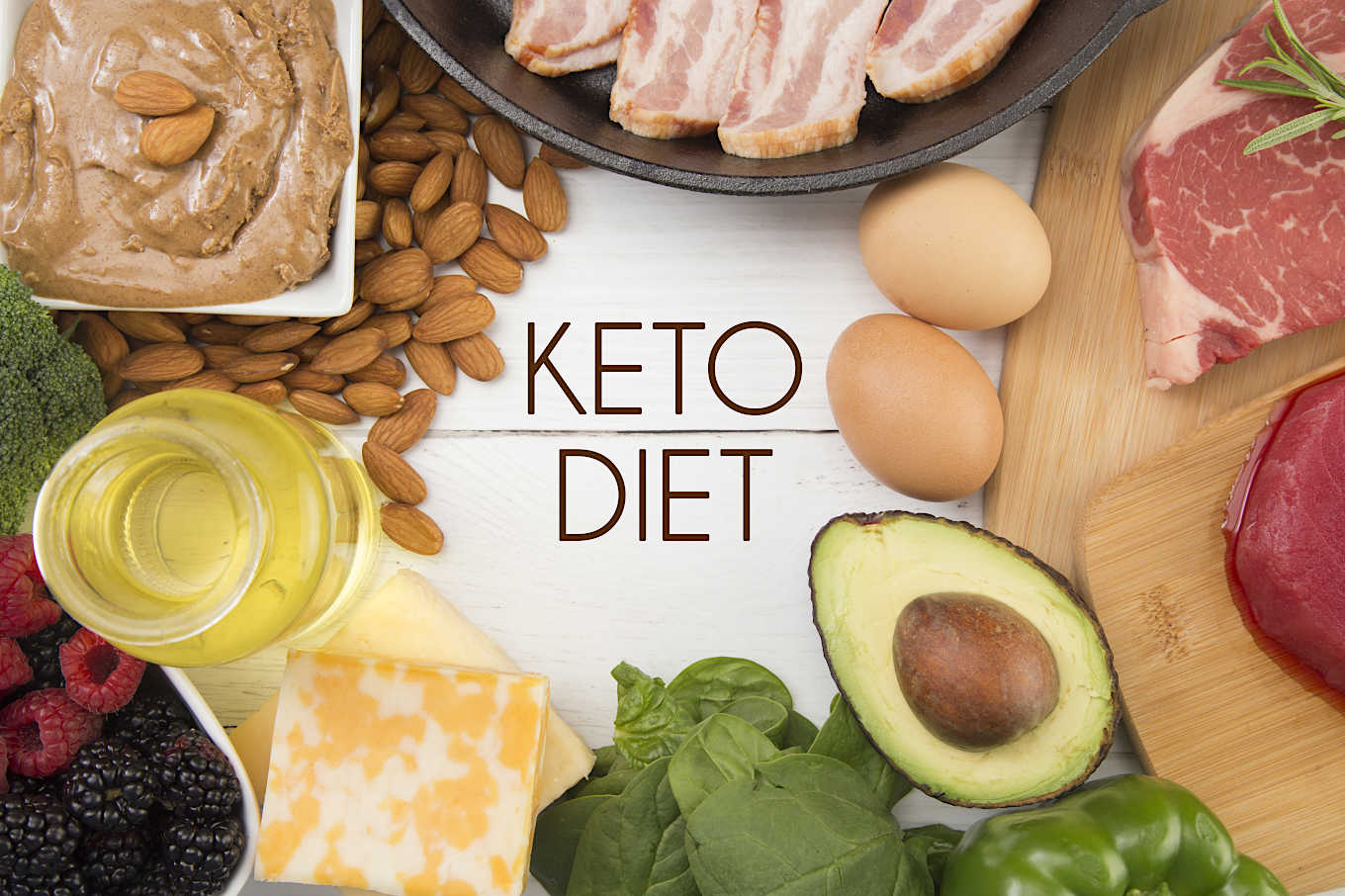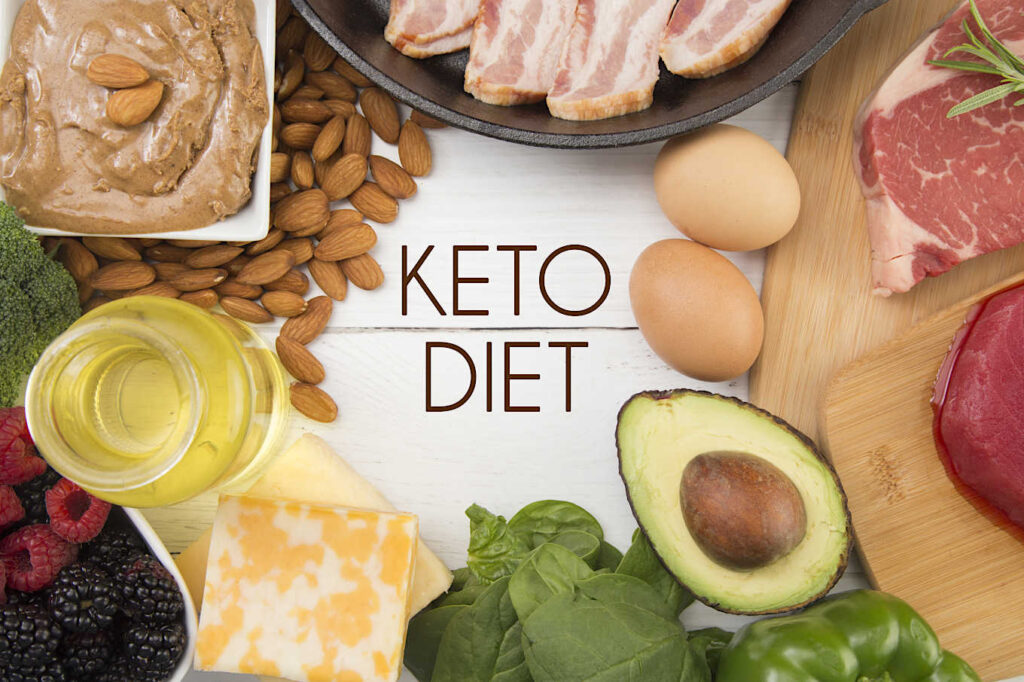
Introduction
How to lose weight on keto diet (keto) is a successful method for losing extra weight. When you are in ketosis, you substantially cut back on carbohydrates and increase your intake of healthy fats, which causes your body to burn fat for fuel. You can accomplish your weight reduction objectives by reading this blog piece, which will teach you crucial tactics for executing the keto diet effectively, meal planning advice, and typical blunders to avoid.
For gut health foods click here
Understanding the how to lose weight on keto diet
The keto diet or keto diet for weight loss Instead than calculating points or limiting calories, it adopts a new strategy by changing your consumption of macronutrients. Your body can enter a state of ketosis by increasing your intake of fat, decreasing your intake of protein, and lowering your intake of carbohydrates. Sources from
What is the Keto Diet?
Low-carb and high-fat diets, like the ketogenic diet, encourage burning fat for energy rather than carbs. Your body’s metabolism enters a state of ketosis when you dramatically cut back on carbohydrates and replace them with fat, which aids in weight loss.
How Keto Differs from Other Diets
However, keto diets severely limit carbs in order to induce ketosis, a state in which the body uses fat as its main energy source.
With traditional diets, you may consume moderate to high levels of fat even while you are calculating calories and eating moderate to high amounts of carbohydrates. Contrarily, a ketogenic diet dramatically cuts carbs to just 20–50 grams per day, creating a special metabolic state that other diets cannot match.
The Science Behind Ketosis
Upon reaching ketosis, the body uses glucose as fuel and converts it to fat. Your insulin levels drop when you consume fewer carbohydrates, which releases fat for energy and reduces your fat reserves.
Additionally, ketosis can make your body an effective fat-burning machine, enhance mental clarity, and give you long-lasting energy. Knowing how ketosis works will help you use it to reduce weight and enhance your general health.
Benefits of the Keto Diet for Weight Loss
Benefits of the how to lose weight on keto diet. TFor people who want to reduce weight rapidly and effectively, the ketogenic diet is a fantastic choice. Actually, not many people are aware of all the advantages it provides. By dramatically reducing your diet of carbohydrates and increasing your intake of fat, you can induce a metabolic state known as ketosis and lose weight.
Rapid Fat Loss
Your body learns to burn fat for energy instead of carbs when you follow a ketogenic diet. This alteration leads to rapid fat loss, especially from troublesome areas like the hips and abdomen. Because a ketogenic diet speeds up the breakdown of fat as your body enters ketosis, it helps you lose weight more quickly than regular diets.
Keto diet meal plan :Constant cravings and hunger plague many dieters, which might undermine their attempts to lose weight. The keto diet aids in weight loss in this area by boosting satiety and stabilizing blood sugar levels. Your hunger will naturally reduce when you change your diet, making it easier to follow.
After a ketogenic meal, you could feel hungry, but you will feel satisfied for a few hours. Ketogenic meals’ high fat content prolongs feelings of fullness. Compared to standard weight management strategies, this approach will result in fewer trips to the snack cupboard and less emotional eating.
Improved Energy Levels
Controlling your hunger is one advantage of the ketogenic diet. Additionally, the ketogenic diet will provide you increased energy. When you transition from carbs to fats, your energy levels stay consistent, enabling you to stay active and involved all day.
You might discover as you become used to this routine that you are more driven and experience less weariness as you relish your increased vitality. This significant improvement in stamina makes it much easier to maintain good behaviors while decreasing the excess weight.
Better Mental Clarity
If you struggle to focus and concentrate, you’ll be happy to hear that the ketogenic diet can improve your mental clarity. The brain uses the ketones produced during ketosis as an efficient energy source, which improves cognitive function.
Increased mental clarity can significantly affect productivity and creativity. As your intellect gets sharper, you’ll have a better chance of reaching your weight loss objectives or excelling in your professional undertakings. The cognitive advantages of the ketogenic diet will also appeal to those who are trying to lose weight.
. It’s crucial to understand that the keto diet differs from the majority of diets in that it places a strong emphasis on a low-carb, high-fat diet that puts your body into a state known as ketosis, when it burns fat for energy rather than carbs. Setting realistic objectives, figuring out your macronutrients, and knowing what foods to consume and what to avoid are just a few of the important ideas you must grasp before starting this life-changing adventure.
Setting Realistic Goals
To lose weight, the first thing you should do is make goals that you can reach. Set clear goals to keep yourself going. If you want to lose weight, don’t set goals that are too hard to reach. Instead, say you want to lose 1-2 pounds a week and be happy with your results.
Calculating Macros for Weight Loss
If you want to lose weight on the how to lose weight on keto diet, you need to know how to count your macronutrients. About 70% fat, 25% protein, and 5% carbs are what you need to be ketogenic. You can keep to your plan if you write down how much fat, protein, and carbs you eat.
lass=”yoast-text-mark” />>You should change the big numbers to fit your age, weight, gender, and how much you work out. You can use internet tools to find out how many carbs, protein, fat, and calories you need each day to stay in ketosis and lose weight.
Essential Foods for a Keto Diet
To stay on the ketogenic diet, you need to eat certain things. First, choose veggies and leaves that are low in carbs. You should choose high-fat foods like nuts, seeds, avocados, and healthy oils as your second choice.
When you’re on a ketogenic diet, you need to know what to buy. It is natural for your body to make foods that are low in carbs and high in good fats. These are things you should eat. Eat healthy foods that are high in protein, like meat, fish, and eggs, to stay on track with your diet.
Foods to Avoid
Foods avoid for how to lose weight on keto diet. You must avoid certain items and maintain concentration on your objectives if you want to stick to the ketogenic diet.
It is important to avoid consuming starchy vegetables, grains, and sugary snacks because they have the ability to slow down your progress and cause you to exit the ketosis state at any time.
Having a strong awareness of the items that can inhibit your efforts to drop weight is vital to the ketogenic diet, and it is essential that you have this understanding. When you are attempting to reduce your body fat percentage, it is essential to steer clear of processed foods, products that contain sugar, and an excessive amount of carbohydrates. The presence of these factors may make it more challenging for you to accomplish your objectives and may also have a negative effect on your quality of life in general.
Meal Planning and Preparation
When it comes to the planning and preparation of meals, the ketogenic diet may be both pleasurable and straightforward to adhere to. This is despite the fact that not all diets give this amount of freedom within their guidelines. To guarantee that your meals are in accordance with the objectives of your ketogenic diet and to prevent yourself from succumbing to the temptations to make choices that are rich in carbohydrates at the eleventh hour, you should plan your meals thoroughly in advance.
Creating a Keto Meal Plan
The advantage of weekly meal planning is that it helps you maintain your diet while also saving time and stress. Start by making a list of meals that you will like that are high in fat, low in carbohydrates, and high in protein. You should include leafy greens, non-starchy vegetables, high-quality meats, and dairy in your diet if you want to make sure that your meals are both nourishing and filling.
Snack Options for the Keto Diet
Planning your meals for the week has numerous advantages, one of which is that it makes it easier for you to adhere to your diet, while also reducing the amount of time you spend on it and easing stress. You should begin by making a list of meals that you will love eating and that are high in protein, low in carbohydrates, and high in excess fat.
This should be your first step. You should make sure that your diet include foods such as leafy greens, vegetables that are not starchy, high-quality meats, and dairy products if you want to ensure that the meals you consume are both nourishing and satisfying. It is important to make sure that your diet contains these kinds of foods.
Cooking Techniques and Recipes
Cooking techniques and recipes how to lose weight on keto diet.
Consuming a wide variety of snacks that will not impede your development while adhering to a ketogenic diet is a solution that will allow you to continue following the diet.
In addition to being a wonderful option, snacks like hard-boiled eggs, cheese, nuts, or low-carb vegetables with dip are also a great choice because they are quickly prepared, flavorful, and loaded with nutrients. In the event that you are looking to let your imagination go wild, you should give producing some keto-friendly items a shot and see what you think about the results.
Staying on Track While Dining Out
To follow a how to lose weight on keto diet,
Getting into the right frame of mind will help you stick to the keto lifestyle without giving up your friends and family.
Common Challenges on the Keto Diet
It can be hard to stick to a ketogenic diet because they have their own set of issues. You will be more likely to reach your weight loss goals if you know about these issues.
Keto Flu and How to Manage It
The well-known “keto flu” can happen when you change what you eat. In the first few days of a ketogenic diet, you might feel tired, dizzy, and irritable. You should eat more nutrients like salt, potassium, and magnesium, and you should also make sure you drink enough water. Following your diet should help you get rid of these signs in a few days.
Overcoming Plateaus
In the midst of your how to lose weight on keto diet voyage, you might reach a plateau where, in spite of your greatest efforts, the scale doesn’t seem to move. You may experience frustration at times, but this is a typical aspect of the process. To get around this, examine your diet more closely, make changes to your macronutrient ratios, or try various types of physical activity.
To get over plateaus, it’s critical to comprehend how your body reacts to the ketogenic diet. Try cutting back on your daily caloric intake a little, alternating your carbohydrate intake for a few days, or switching up your workout regimen to boost your weight reduction efforts.
Dealing with Social Situations
It can be hard to get along with other people when you’re on a ketogenic diet. Y
You should stay busy if you’re on the ketogenic diet with other people. Knowing what their loved ones need to eat can help some people feel less stressed. This is because they know them better. Stick to your diet and choose low-carb snacks to deal with other people better.
Maintaining Long-Term Adherence
Once you hit a plateau on the ketogenic diet, you may feel down and start to question your choice to stick with it. Plan things out, but be ready to change your mind if you find out something new. Also, helpful groups, whether they’re online or in real life, can help people keep going.
If you’re on a ketogenic diet, you should change how you live for good, not just for a short time.
Monitoring Your Progress
As you read about how to lose weight on keto diet, writing down your success might help you stay on track. If you know how your body changes when you eat different things, you can make smart choices that will help you.
Tracking Weight Loss
How to lose weight on keto diet The best way to keep track of it is to weigh yourself often each week, ideally at the same time. As a result, you will be able to stay highly motivated and identify trends over time. It is crucial to keep in mind that fluctuations may occur, so consider the wider picture instead of concentrating on the current circumstances.
Measuring Ketosis Levels
With the benefits of each approach, you can assess whether you are continuing to maintain the ideal level of ketosis to help you reach your weight reduction objectives.
To be successful with the keto diet, you must be aware of your degree of ketosis. By monitoring your ketones on a regular basis, you can make sure your body is burning fat. With this knowledge, you will be able to modify your diet, including how much fat and carbohydrates you eat, to help you stay in ketosis and meet your objectives.
Adjusting Your Plan as Needed
You will need to be adaptable and prepared to change your food plan as you go along on your keto journey. If you’re not getting the desired results, you might want to reconsider your macronutrient ratios or think about cutting back on carbohydrates even more.
You might run into plateaus, and there’s no assurance that your growth will be linear. By regularly tracking your weight loss and ketones, you may make well-informed changes to your eating plan. Changing your calorie consumption, increasing your degree of physical activity, or trying new meals can be necessary to rekindle your weight reduction efforts.
The Role of Supplements
Nutrient deficits can occasionally result from dietary changes, so think about include supplements that support your ketogenic lifestyle. During this time of food change, you can maintain your general health by taking necessary vitamins and minerals.
By avoiding exhaustion and cramping, these can help you keep your energy and attention when you lose weight.
Conclusion
To put it simply, if you want to how to lose weight on keto diet you need to consume a great deal fewer carbohydrates and a great deal more healthy fats at the same time. Make sure you get enough water, educate yourself on the foods you should consume, and keep a close eye on the amount of each food you consume.
You should make sure that the meals you consume are whole and not processed, and you should also make sure to keep a close eye on your progress so that you can make any necessary adjustments for the better. If you adhere to these guidelines, you will be able to achieve the greatest potential weight loss and take advantage of all the additional advantages that come with adopting a ketogenic lifestyle.
Related Articles
- Balancing Health: The Key to Sustainable Energy and Health
- 14 Ways to Increase Protein Intake Daily Tips
- Healthy Eating Meal Plan for Wellness
- 4 Week Diet Plan for Weight Loss
- 12 Best Diets to Lose 100 Pounds

